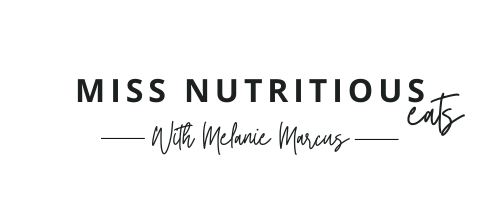Why I eat leftover salmon straight from the fridge
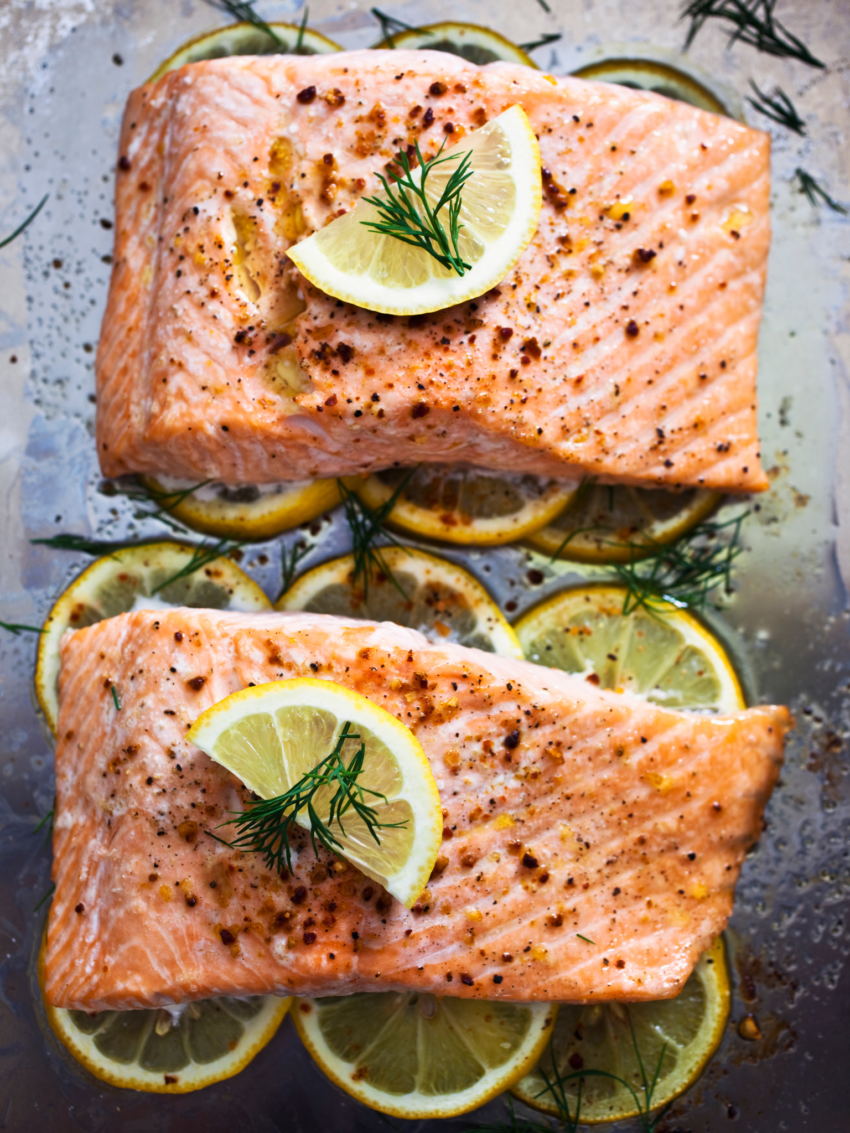
Atlantic salmon is a weekly staple for us when it comes to healthy eating. (I’ll save why this is my preference for another post!) It’s a delicious fish that can be prepared in a variety of ways whether you’re buying fresh or frozen salmon from the grocery store.
Leftover salmon from the day before is delicious protein source. Have you ever tried eating cold salmon? Personally, I think it’s the best way to eat it for convenience, taste and avoiding that fishy smell! Read on, and I’ll explain 🙂
Table of contents
The fastest way to prepare salmon
Jump to RecipeBefore Kids
I used to roast fresh salmon or defrosted salmon in my toaster oven or in a 400 F oven. I would remove any excess moisture with a paper towel, coat with a bit of olive oil spray, season with Seasonello and top with lemon slices and roast for 15-20 minutes depending on the thickness of the fish. Still a great way to prepare salmon, (and I still do when cooking for a large crowd), but on a normal weeknight, every minute counts.

After Kids
While the above method seems pretty quick and painless, I now have even less time and this is BY FAR, my favorite way to prepare salmon – bonus my husband even likes it too!
- Take a 6-8oz frozen salmon fillet out of packaging and place directly in 400F bucket air fryer.
- Spray with olive oil spray, season with salt and pepper or Seasonello and top with lemon slices.
- Cook for 14 minutes (from frozen) and serve!!
- Salmon should look opaque and golden and reach an internal temperature of 145 F with a food thermometer when done.
When it’s cooked at a high temperature like this, the outside gets a little color to make it appealing and the inside is flakey and moist.
I can usually fit 3 salmon fillets in my air fryer and I usually try to make at least one extra piece of salmon for lunch the next day.
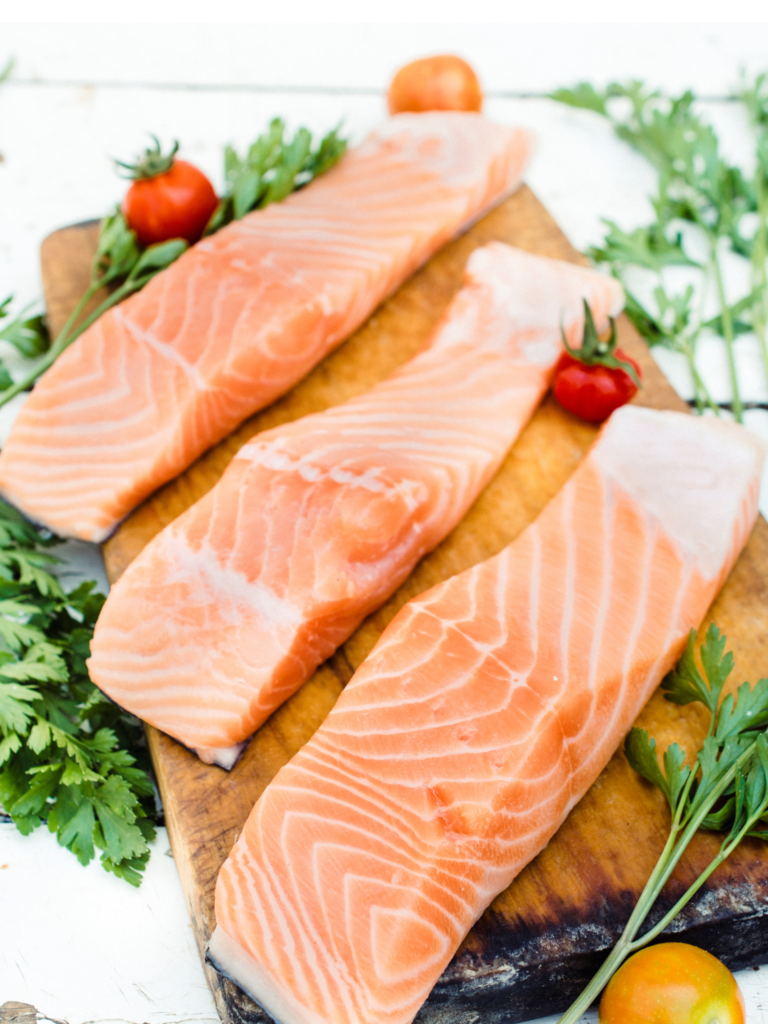
How to store cooked salmon properly
Storing leftover salmon properly is crucial to ensure food safety and to maximize its shelf life. After cooking salmon, let it cool to room temperature before storing it in an airtight container or wrapping it tightly in plastic wrap or aluminum foil. This will keep it fresh for up to 3-4 days.
Why I eat cold leftover salmon straight from fridge
Now, back to the topic of why I eat cold leftover salmon straight from the fridge. There are a few reasons why this is a great choice.
Convenience:
Eating cold leftover salmon is a great way to save time and effort. You don’t have to worry about reheating it or going through the whole cooking process again. I like to eat it as is, make salmon salad out of it, add it to a salad or even make a sandwich.
Taste:
As strange as it may sound, leftover cold-cooked salmon can taste even better than the first time you had it. The flavors have had time to meld together, and your taste buds may pick up on different nuances that you didn’t notice before. Because salmon is a fattier fish, it maintains a moist flaky texture too which makes it very satisfying to eat. My kids prefer salmon cold too.
No Fishy Smell:
There’s something to be said about office kitchen etiquette about salmon. When you’re eating it, everyone knows it because of they fishy odors! When you have it cold with your meal, it still tastes great, and won’t smell up the whole kitchen the way reheated fish does.

Nutritional benefits:
Salmon is rich in omega-3 fatty acids, which are important for brain function and overall health. Eating cold leftover salmon is an easy hands off way to get more of these beneficial nutrients in your diet.
Rich in Omega-3 fatty acids: Seafood, especially oily fish like salmon, tuna, and sardines, are excellent sources of Omega-3 fatty acids that are essential for heart and brain health.
High in protein: Seafood is a great source of lean protein, making it an ideal option for those looking to increase their protein intake without consuming excess calories or unhealthy fats.
Low in saturated fat: Compared to other animal proteins, seafood contains lower amounts of saturated fat. This makes it a healthier option for those looking to maintain cardiovascular health.
Contains essential vitamins and minerals: Seafood is rich in vital nutrients like vitamin D, selenium, iodine, and zinc, which play crucial roles in maintaining overall health.
Helps prevent chronic diseases: Regularly consuming seafood has been linked to a reduced risk of chronic diseases like heart disease, Alzheimer’s disease, and depression due to its high nutrient content.
Supports healthy growth and development: Seafood is especially important for children and pregnant women as it provides essential nutrients for proper growth and development.
Lowers inflammation: The anti-inflammatory properties of Omega-3 fatty acids found in seafood can help reduce inflammation in the body, which is linked to many chronic diseases.
Aids in weight management: Due to its high protein content and low calorie density, seafood can be beneficial for weight management by promoting satiety and reducing overall calorie intake.
To enjoy cold leftover salmon straight from the fridge, simply take it out of the container and enjoy, or let it sit at room temperature for a few minutes and top with lemon juice.
Other salmon recipes
I know my roasting method is basic, but it works and it’s delicious. I’m not a fan of coating with cream cheese or feta cheese because it is already a good source of healthy fats. And for basic weeknight meals, balance is important. We talk a lot about that if you enroll in the FASTer Way and are focused on health too!
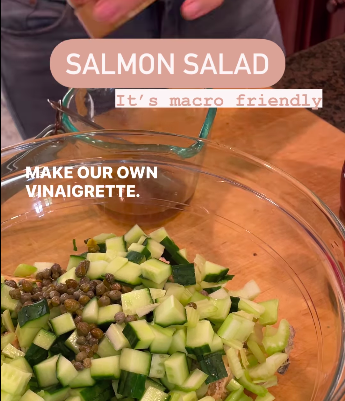
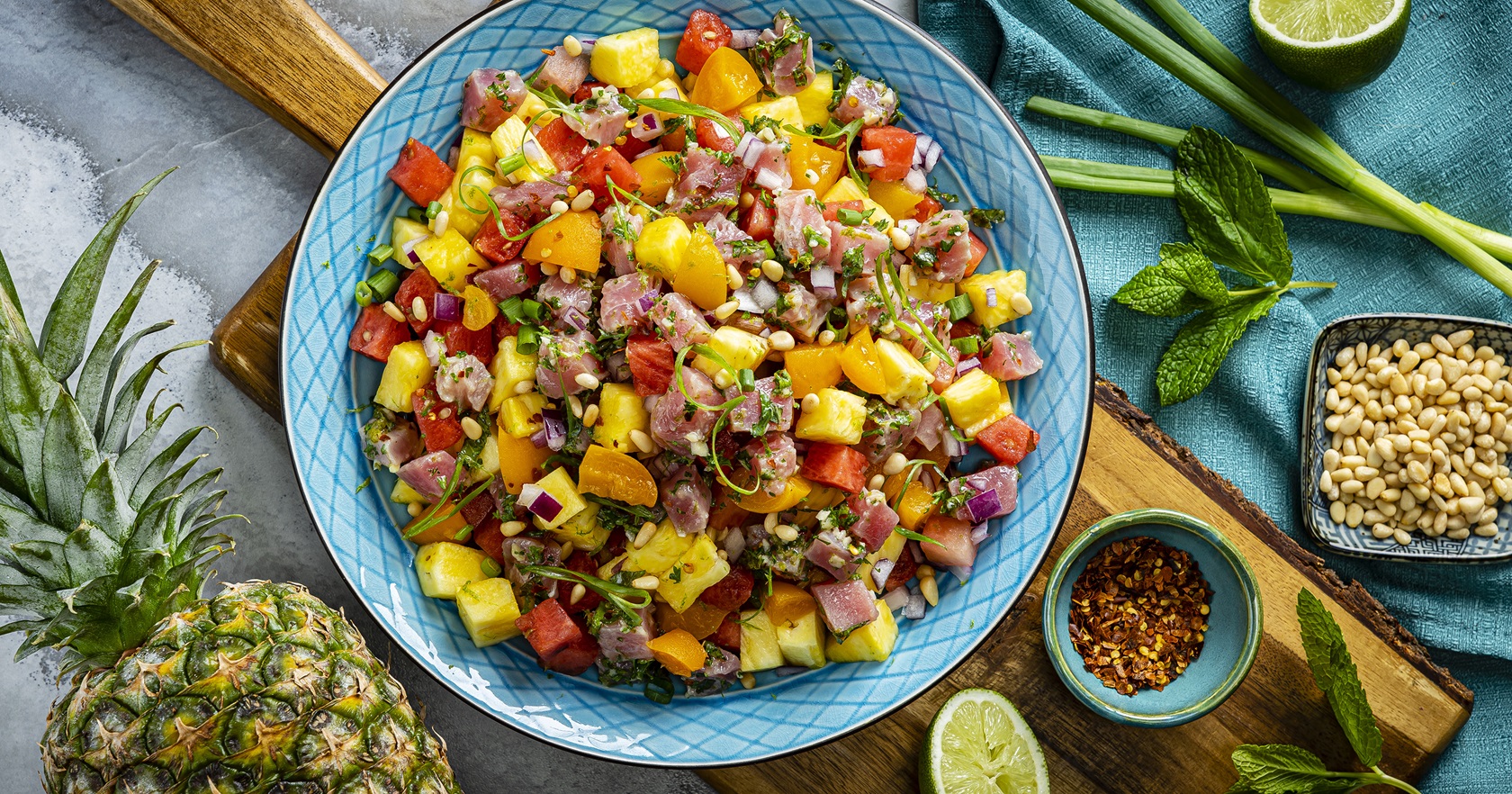

You can easily turn leftover salmon into salmon cakes by combining with a bit of bread crumbs, chopped bell peppers, red onions and mayo or egg. Form into salmon patties and cook over medium heat with a little olive oil on stovetop until brown and cooked through.
One recipe I do really love is this simple salmon salad, which you can make with canned or cold cooked salmon. It would also be phenomenal over baked salad too!

Ingredients
Equipment
Method
- Preheat air-fryer to 400F.
- Place frozen salmon on parchment liner in air fryer basket and let cook for 14 minutes.
- Should reach an internal temperature of 145F with a meat thermometer when done.
Nutrition

